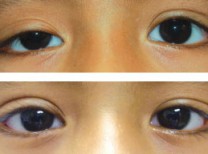In recent years, medical research has shown that an increasing number of children are Vitamin D deficient. Currently, 1 in 10 children in the U.S. is estimated to be Vitamin D deficient, and 60 percent of children have suboptimal levels of this vital nutrient.1
Vitamin D is primarily necessary for building strong bones in growing children. However, it is also necessary for keeping a strong immune system, building lung tissue to prevent asthma, and reducing long-term risk of chronic illness, heart disease, and diabetes. Our adult health begins with pre-programming in the first ten years of life and many diseases are rooted in early exposures, lifestyle, and nutrition, or lack thereof.
Vitamin D production is stimulated when our skin is exposed to sunlight; it is also found in dietary sources such as some fish, eggs, and some dairy. Vitamin D deficiency can be due to lack of sun exposure, daily sunscreen use, poor diet, gastrointestinal disorders and/or inflammation, higher levels of melanin in the skin, and excess body mass.
Although it is recommended to use sunscreen daily to prevent skin cancer, an effect is lowered production of Vitamin D, and while only a small portion of usable Vitamin D comes from the diet, a poor diet can limit necessary supplementation.
Vitamin D deficiency shows few – and often no – symptoms including bone and muscle pain, muscle weakness, poor muscle stamina, bowed legs in children, and low mood.2 Due to the lack of obvious symptoms, it is essential that babies, children, and adults get their Vitamin D levels tested yearly.
Currently, the American Academy of Pediatrics (AAP) recommends that beginning in infancy all children be tested for Vitamin D deficiency and begin supplementing 400iu daily.3 While Vitamin D is found in breast milk and formula, it is possible that those sources may not contain adequate levels of Vitamin D for supplementation. It is also recommended that pregnant women and nursing mothers take Vitamin D as supplementation in pregnancy can reduce the risk of asthma, build the immune system, and prevent adulthood diseases. Mothers who supplement while breastfeeding will also enhance the content of Vitamin D in their breast milk.
In addition, it is generally recommended that women began pre-conception supplementation of Vitamin D three months in advance of a planned pregnancy, and as stated above, continue supplementation through pregnancy and while breastfeeding.
Vitamin D testing is simple and can be done through a finger prick test for infants, small babies, and needle-adverse children. Vitamin D supplements are best in a liquid base or gel cap form. Doses higher than 400iu daily should be balanced with supplementation of Vitamin K and Magnesium.4
Dr. Sinsheimer is a Naturopathic Doctor with Optimal Health Center in Palm Desert and can be reached at (760) 568.2598.
1. http://www.hopkinschildrens.org/Screen-All-Kids-for-Vitamin-D-Deficiency.aspx 2. http://emedicine.medscape.com/article/128762-clinical 3. http://www.aap.org/en-us/about-the-aap/aap-press-room/pages/Vitamin-D-Supplementation-for-Infants.aspx 4. http://articles.mercola.com/sites/articles/archive/2014/11/10/vitamin-d-deficiency-children.aspx














































Comments (0)